

 |
Search the Site with

|
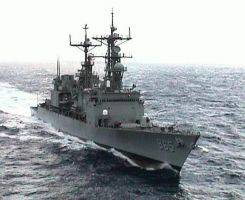 | 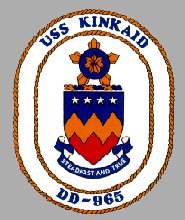 | 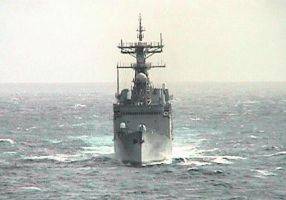 |
USS KINKAID was the third of 31 SPRUANCE-class Destroyers and the second ship in that class to join the Pacific Fleet. USS KINKAID was last homeported in San Diego, Ca. Stricken from the Navy list on April 6, 2004, the KINKAID was sunk as a target on July 14, 2004, during RIMPAC 2004.
| General Characteristics: | Awarded: June 1, 1970 |
| Keel laid: April 19, 1973 | |
| Launched: May 25, 1974 | |
| Commissioned: July 10, 1976 | |
| Decommissioned: January 7, 2003 | |
| Builder: Ingalls Shipbuilding, West Bank, Pascagoula, Miss. | |
| Propulsion system: four General Electric LM 2500 gas turbine engines | |
| Propellers: two | |
| Blades on each Propeller: five | |
| Length: 564,3 feet (172 meters) | |
| Beam: 55,1 feet (16.8 meters) | |
| Draft: 28,9 feet (8.8 meters) | |
| Displacement: approx. 9,200 tons full load | |
| Speed: 30+ knots | |
| Aircraft: two | |
| Armament: two | |
| Crew: approx. 340 |
Crew List:
This section contains the names of sailors who served aboard USS KINKAID. It is no official listing but contains the names of sailors who submitted their information.
USS KINKAID Cruise Books:
About the Ship's Coat of Arms:
 The official crest of KINKAID is highly symbolic of the ship's namesake Admiral Thomas C. Kinkaid, one of America's great Naval Officers.
The official crest of KINKAID is highly symbolic of the ship's namesake Admiral Thomas C. Kinkaid, one of America's great Naval Officers.
The blue globe with a seven-pointed star within represents the seven oceans of the world in which the ship is prepared to serve, and also alludes to Admiral Kinkaid's Seventh Fleet Command. The five rays of the sunburst denote the five major battles in which Admiral Kinkaid participated in the Pacific: Coral Sea, Midway, Guadalcanal, the Aleutians, and Leyte Gulf.
The four stars in the blue field and the three points in gold refer to the numerical designation of the Seventh Fleet, which Admiral Kinkaid commanded in support of General MacArthur's major operations in four areas: Hollandia, the Philippines; the Admiralties and Borneo. The stars also refer to Admiral Kinkaid's promotion to full Admiral.
The scarlet in the base of the shield alludes to Admiral Kinkaid's role as Commander of the North Pacific Fleet in the Aleutians where he directed the operations that ended the only enemy occupation of American soil. The color red is also symbolic of courage and the heat and action of battle.
The Ship's Motto "Steadfast and True" comes from two letters from and about Admiral Kinkaid. "Steadfast" was the word used by Fleet Admiral Ernest King to describe Admiral Kinkaid in a letter written to Mrs. Kinkaid in 1942. "True" is from a letter Admiral Kinkaid wrote to his wife in 1945, in which he said that above all else, he wanted to be remembered for having been true to his mission.
Accidents aboard USS KINKAID:
| Date | Where | Events |
|---|---|---|
| November 1989 | Straits of Malacca |
History of USS KINKAID:
USS KINKAID was designed and built by Ingall's Shipyard of Litton Industries in Pascagoula, MS. Her keel was laid on 19 April 1973 and she was christened on 1 June 1974. The USS KINKAID was commissioned on 10 July 1976.
On July 4, 1993, USS KINKAID paid a three-day port visit to Acajutla, marking the first visit by a US warship to El Salvador in more than a dozen years. USS KINKAID was then assigned to Destroyer Squadron 13 in San Diego and was, at the time, conducting two months of routine operations under the operational command of Joint Task Force Four, located in Key West, FL. KINKAID returned to San Diego in mid-August.
The USS KINKAID deployed on November 10, 1994, as part of the USS CONSTELLATION (CV 64) Battle Group for a six-month deployment to the western Pacific, Indian Ocean and Persian Gulf. It spent most of December in the Western Pacific. With the USS CONSTELLATION Battle Group, it entered the Arabian Gulf, on January 11, 1995, and departed it on March 23. The CONSTELLATION Battle Group conducted several exercises during the deployment, including Beachcrest '95, a routine annual exercise that included air combat, air control and air-to-ground combat support training in designated areas on Okinawa and Ie Shima; Nautical Swimmer 95-2 and Nautical Artist 95-2, naval air and surface exercises intended to improve interoperability between forces of the U.S. and friendly Gulf nations; Beacon Flash 95-1, a combined naval tactical air exercise to improve readiness with friendly Gulf nations; Eager Archer 95-1, an air training exercise between units of CVW-2 and Kuwait that provided dissimilar air combat training, formal joint strike training and in-flight refueling training for the Kuwaiti air force; and Sharem 110, a U.S. anti-submarine warfare training exercise in the Gulf of Oman involving several battle group units. The battle group also conducted exercises with units of the Royal Australian navy off the coast of western Australia. The USS KINKAID made its seventh deployment and supported the battle group by performing the anti-submarine warfare mission.
USS KINKAID underwent a period of overhaul in June 1995.
As a result of a reoganization of the Pacific Fleet's surface ships into six core battle groups and eight destroyer squadrons, the USS KINKAID was reassigned to Destroyer Squadron 21. The reorganization was scheduled to have been completed by October 1, 1995, with homeport changes to be completed within the following year.
In mid-1997, as part of the USS NIMITZ (CVN 68) Battle Group, the USS KINKAID took part in Pacific Joint Task Force Exercise 97-2 (JTFEX 97-2). The exercise was conducted off the coast of southern California and also included units from the Air Force, Army and Japan. USS NIMITZ, from July 20 through July 24, then conducted a warfighting demonstration called Surge Exercise (SURGEX), during which it demonstrated the firepower of the carrier/airwing team and its ability to sustain continuous operations in support of forces ashore in the initial four days of a conflict when a deployed carrier might be the only asset available to provide such support. During the exercise, USS COMSTOCK (LSD 45), USS KINKAID and USS FORD (FFG 54) practiced maritime interception operations. The USS KINKAID also escorted the civilian merchant ship VIKING SERENADE through the simulated "war zone".
USS KINKAID then deployed as part of the USS NIMITZ (CVN 68) Battle Group. After Western Pacific visits in Yokosuka, Japan, and Hong Kong, a planned visit to Singapore was canceled when Iraq violated a UN imposed "no fly" zone. With the NIMITZ directed to proceed to the region immediately to reinforce Operation Southern Watch operations, the USS KINKAID arrived in the Arabian Gulf on October 12 after transiting the Strait of Hormuz.
During NIMITZ's deployment in the Arabian Gulf, USS KINKAID was accused by Iran of spying on its military exercises. The USS KINKAID was, however, in port in Bahrain at the purported time Iran claimed the spying was taking place.
USS KINKAID returned on February 28, 1998, from her six-month Arabian Gulf deployment.
USS KINKAID was part of the USS CONSTELLATION (CV 64) Battle Group, as the USS CONSTELLATION officially relieved the USS THEODORE ROOSEVELT (CVN 71) in the Arabian Gulf in September 1999. The CONSTELLATION battle group then spend the next 10 weeks in the Arabian Gulf and conducted MIO boardings as well as flew combat air patrols over the Iraqi no-fly zones in support of Operation Southern Watch. During the period, USS KINKAID rescued the MV SIMA STAR, a container ship, from sinking 70 miles off the coast of Bahrain after taking on over 40 tons of water. KINKAID Sailors dewatered the fully loaded container ship, which was listing 15 degrees to the port side. After seven hours of battling poor ventilation and flooding below decks, KINKAID's rescue and assistance team was able to return the SIMA STAR to a five degree list, allowing its crew to sail into Bahrain Monday morning for repairs. USS KINKAID returned home on December 17, 1999, after the six-month deployment. During its 10-week patrol in the Arabian Gulf region, the Connie Battle Group flew more than 5,000 casualty-free sorties, including nearly 1,300 in support of Operation Southern Watch. These flights included nine separate combat strikes and more than 43 tons of ordnance expended on various Iraqi air defense sites in response to Iraqi aggression against coalition aircraft.
USS KINKAID began, on March 15, 2001, her scheduled six-month 2001 Western Pacific (WestPac) deployment while attached to the USS CONSTELLATION (CV 64) Battle Group (CVBG) and USS BOXER (LHD 4) Amphibious Ready Group (ARG). The entire battle group had trained the previous six months in preparation for this deployment through a series of increasingly challenging exercises and operations. These pre-deployment exercises culminated in February 2001 with the successful completion of Joint Task Force Exercise 01-1. Over the following six months, battle group ships conducted multi-national and joint operations with the navies of various allied countries and visit ports in Western Pacific and Persian Gulf nations. The ships and squadrons returned home in September 2001.
The US Navy Surface Force was scheduled to begin, in the summer of 2002, an initiative to test the effectiveness of deploying a single ship for 18-months while swapping out crews at six-month intervals. Called Sea Swap, this initial two-phased initiative would involve three SPRUANCE-class destroyers -- USS FLETCHER (DD 992), USS KINKAID and USS OLDENDORF (DD 972), and three ARLEIGH BURKE-class guided missile destroyers -- USS HIGGINS (DDG 76), USS JOHN PAUL JONES (DDG 53) and USS BENFOLD (DDG 65). For the DD phase, FLETCHER and her crew would deploy with their battle group, but after six months, only the crew would return. The ship would remain deployed and be manned by the crew from KINKAID. After completing their training cycle and decommissioning KINKAID, these Sailors would fly to a port in either Australia or Singapore to assume ownership of FLETCHER and steam her back on-station. After six months, they would be replaced by the crew from OLDENDORF who would have completed the same training and decommissioning schedule with their ship before flying out to relieve the KINKAID crew. After four more months on station, the OLDENDORF crew would then bring the ship (FLETCHER) back to the United States where it too would be decommissioned. Additionally, by executing this plan, the Navy would be able to eliminate the deployment of USS PAUL F. FOSTER (DD 964) because the additional on-station time generated by swapping out the crews meant a ship would already be in theater meeting that requirement.
On January 7, 2003, USS KINKAID was decommissioned in a ceremony on Pier 7 at Naval Station San Diego. This decommissioning ceremony was a little different from other ones, however. Instead of going their separate ways throughout the fleet after decommissioning, the KINKAID crew members relieved the officers and sailors aboard USS FLETCHER (DD 992) in Perth, Australia, as part of "Sea Swap."
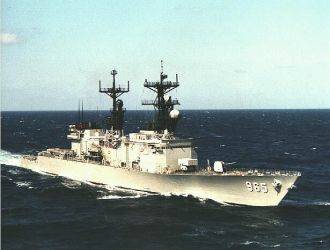
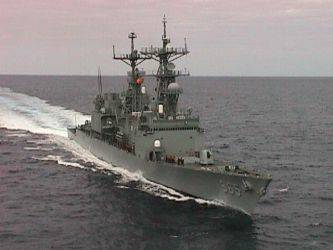
About the Ship’s Name, about Admiral Thomas C. Kinkaid:
Thomas Cassin Kinkaid was born in Hanover, New Hampshire on April 3, 1888. He attended the U.S. Naval Academy graduating with the class of 1908.
After graduation from the Naval Academy he served in the battleships NEBRASKA and MINNESOTA until September 1913, when he reported to the Postgraduate School, Annapolis, for instruction in Ordnance Engineering. From 1916 to 1918 he served aboard the USS PENNSYLVANIA followed by a tour with the British Admiralty.
He was Gunnery Officer aboard USS ARIZONA 1918-1919 when it was an escort ship for President Woodrow Wilson, then en route to the Peace Conference at Versailles. Following a cruise to Asia Minor he was ordered to Washington, D.C. for duties with the Bureau of Ordnance, Navy Department, where he remained until July 1922.
From 1922 to 1930, Admiral Kinkaid served successively as Assistant Chief of Staff to the Commander, U.S. Naval Detachment in Turkish Waters; as Commanding Officer of USS ISHERWOOD; at the Navy Yard, Naval Gun Factory, Washington, D.C. and as Fleet Gunnery Officer and Aide on the Staff of Commander-in-Chief, U.S. Fleet.
In 1930 he returned to Washington for duties in connection with the Treaty for the Limitation of Armaments, and in 1931 reported to the Secretary of State, then in Geneva, where he served as Technical Advisor in connection with studies relating to the Treaty.
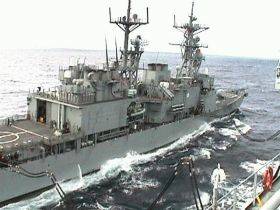 From 1933 to 1938, Admiral Kinkaid served as Executive Officer of USS COLORADO, with the Navy Department as Officer-in-Charge of the Officer's Detailing Section and as Commanding Officer of the USS INDIANAPOLIS.
From 1933 to 1938, Admiral Kinkaid served as Executive Officer of USS COLORADO, with the Navy Department as Officer-in-Charge of the Officer's Detailing Section and as Commanding Officer of the USS INDIANAPOLIS.
In November of 1938 he was designated Naval Attache and U.S. Naval Attache for Air at the American Embassy, Rome, with additional duty from March 1939 to March 1941 as Naval Attache to the Embassy in Belgrade, Yugoslavia.
He commanded Destroyer Squadron Eight from June 1941 until his promotion to Rear Admiral in November. This assignment was followed with command successively of Cruiser Division Six, Pacific Fleet, and a Task Force which engaged in the Battle of Solomon Islands and the Santa Cruz Islands. In the Battle of Guadalcanal, November 12-15, 1942, he commanded a Task Force built around the USS ENTERPRISE Air Support Group and Battleships, the first surface officer ever to command a Carrier Task Force.
In January of 1943 he assumed command of the North Pacific Fleet and was responsible for ending the Japanese occupation of the Aleutians. From November 1943 to 1945, then Vice Admiral Kinkaid served as Commander, Allied Naval Forces, Southwest Pacific Area. In this capacity he supported General MacArthur's landings in this area and engineered the defeat of the Japanese Fleet at the Battle of Leyte Gulf. Promoted to full Admiral in April 1945 he continued to serve as Commander, Seventh Fleet until the war's end. After the war he returned to the United States and served as Commander, Sixteenth Fleet until his retirement in May 1950.
Admiral Kinkaid is the holder of four Distinguished Service Medals and numerous Campaign and Service Medals. In addition, he is an Honorary Companion of the Order of the Bath, awarded by King George VI of Great Britain; Grand Officer, Order of the Orange Nassau with Swords, bestowed by Queen Wilhelmina of the Netherlands and other decorations from Chile, Belgium and China.
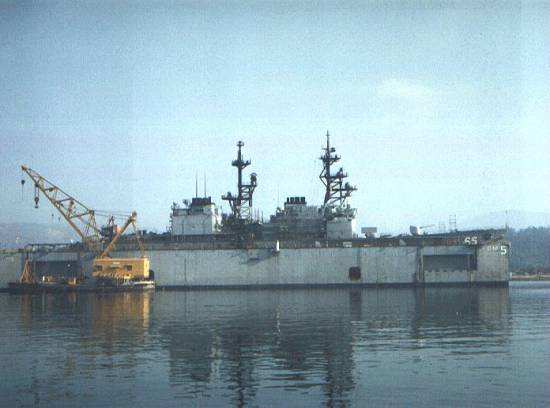
USS KINKAID Patch Gallery:
 |
USS KINKAID Image Gallery:
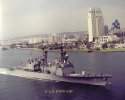 | 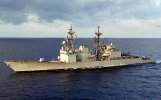 | 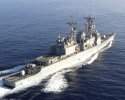 | 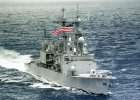 | 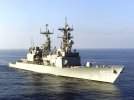 |
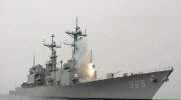 | 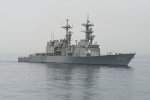 | |||
 Back to Destroyers list.
Back to Destroyers list.  Back to ships list.
Back to ships list.  Back to selection page.
Back to selection page.  Back to 1st page.
Back to 1st page.